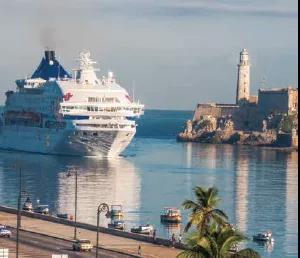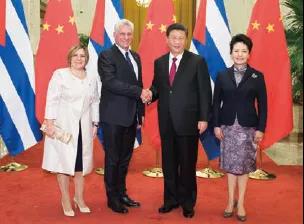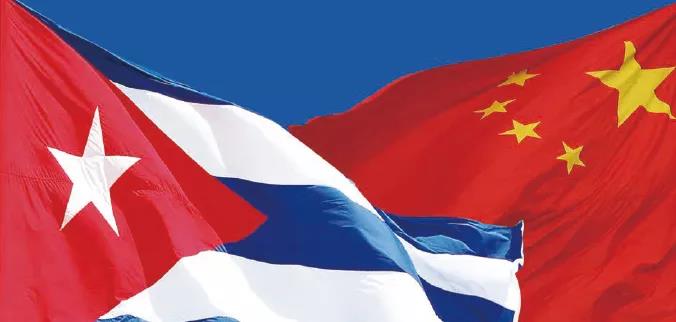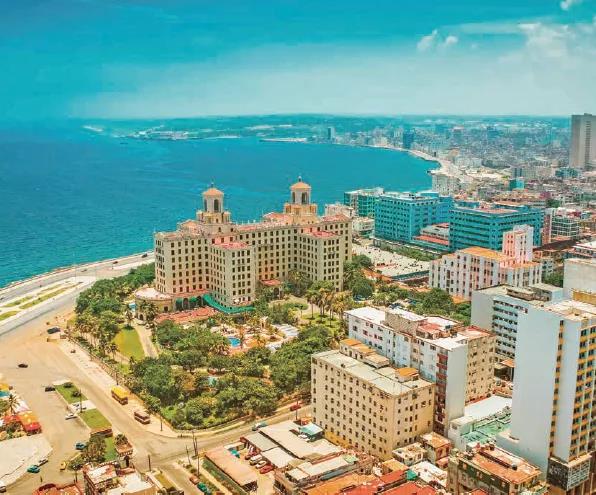
发布时间:2021-06-10
Main Cities: Havana, Santiago de Cuba, Holguín, Camagüey, Cienfuegos, Matanzas, Pinar del Río and Ciego de Ávila.

Capital: Havana
Area: 109,884.01 km²
Official Language: Spanish
Time zone: GMT-5
Political and Administrative Division: Cuba is divided into 15 provinces and 168 municipalities, including the special municipality of the Isle of Youth.
Population: 11, 193, 470 inhabitants (2019).


Geographic Location: Cuba is an archipelago comprising the island of Cuba with an area of 104, 338.33 km², the isle of Youth with 2, 419. 27 km², and about 3, 126.41km² of adjacent cays and islets. It is the biggest Caribbean island and has a strategic position at the entrance of the Gulf of Mexico in the Caribbean Sea.
Climate: Cuban climate is tropical, seasonally humid, with maritime influence and semi-continental features. Temperatures are generally high. Average annual temperatures range from 22°C to 30°C and may be higher in the eastern part; values lower than 20°C are reported in the highest areas of mountain ranges.
Official Currency: Cuban peso (CUP). The convertible peso (CUC) is also used to pay for products and services offered in that currency within the national territory.
Political and Governmental System: Cuba is a socialist state of law and social justice, democratic, independent and sovereign, organized with all and for the good of all as a unitary and indivisible republic. The National Assembly of People's Power is the supreme organ of state power. It represents and expresses the sovereign will of all the people.
Educational System: The country has an educational system going from the day care centers to the universities scattered throughout the national territory, which is free of charge. There are about 60 higher education institutions: the University of Havana, which is the most important center of the Island including several specialized schools, as well as high level and prestigious university centers in each of the provinces.

Telecommunications: The Telecommunication Company of Cuba, S.A. (ETECSA), has a network of Internet and telephone services, which guarantees direct communication within the national territory and with any place of the world (http://www. etecsa.cu). ETECSA commercializes mobile telephony, operating under the GSM (900 MHz) and 3G-4G around all the national territory.
Transportation System: There is a seaport, road and air infrastructure that allows the connectivity of social economic objectives both in and out of the country. Also, the country has a solid airport infrastructure whose expansion has been planned for the main tourist areas, in view of the expectations of tourism growth in the Island. There is a direct fly of Air China from China to Havana with an hour of technical stopover in Montreal.
Maritime Transportation: Cuba has 32 commercial ports. The most important ones are Mariel, Havana, Santiago de Cuba, Cienfuegos, Matanzas, Moa, Gerona, Cayo Largo, Batabanó and Nuevitas. The most modern port in the country is the Mariel one, located in Artemisa province, within Mariel Special Development Zone, which is about 45 km to the west of Havana that can receive supertankers after the expansion of the Panama Canal.

External Sector:
Cuba is signatory to and member of the following regional and international institutions: Bolivarian Alliance for the Peoples of Our America-People’s Trade Treaty (ALBA-TCP by its Spanish initials); Community of Latin American and Caribbean States (CELAC, by its Spanish initials); United Nations Organization and its bodies; Latin American Integration Association (LAIA); Association of Caribbean States (ACS); Economic Commission for Latin American and the Caribbean (ECLAC); Organization of Ibero-American States for Education, Science and Culture (OEI, by its Spanish initials); G-77 plus China; World Trade Organization (WTO); Non-Aligned Movement (NAM); International Telecommunications Union (ITU); Universal Postal Union (UPU).
In addition, Cuba maintains diplomatic and consular relations with more than 180 countries. It has more than 140 missions in over 120 nations.
BILATERAL RELATIONS
 |
 |
| Visit to China of the President of the Councils of State and of Ministers Miguel Díaz-Canel Bermúdez. Received by the President of China, Xi Jinping. November 6-8, 2018. | Chinese President Mao Zedong receives Commander Ernesto Che Guevara, then President of the National Bank of Cuba at the Great Hall of the People in Beijing. November 19, 1960. |

On 28th September of 2020, Cuba and China celebrate the 60th anniversary of the establishment of diplomatic relations, an event that transcends the ties between Cuba and China, since it also represents the beginning of relations between China and the Latin American and the Caribbean region.
The recognition of the People's Republic of China (PRC) was one of the first acts of sovereignty and independence of the nascent Cuban Revolution, when that September 2nd, 1960 during the First Declaration of Havana and with the presence of more than a million of Cubans gathered in the Revolution Square, the Commander in Chief, Fidel Castro, announced the breakdown of relations with Taiwan regime and the establishment of these with the New China.
The history of international relations has not recorded any other similar act in which the recognition of a country or the establishment of official relations between two nations was preceded by such a spontaneous and sincere manifestation of popular will.
With this action, Cuba became the first country in the entire Western Hemisphere to recognize the New China. Since then, despite the geographical distance, Cuba and China have built deep historical ties based on mutual trust, unbreakable friendship, support and understanding.
However, the Sino-Cuban friendship was not born with the establishment of official ties between the two countries, since they have a solid historical basis, dating back more than 170 years ago, when the first Chinese emigrants arrived to Cuban coasts, thus beginning a long common journey full of significant contributions to the forging of Cuban nationality and culture, as well as to the heroic struggles for national independence.
Today, there is no sector in the relations that is not directly connected in a fluid and mutually beneficial exchange. Our links have a solid historical base where political, economic-commercial, cultural, educational ties and people-to-people exchanges have been deepened.
The COVID-19 pandemic has not only brought our countries closer with the common objective of bringing welfare and health to our peoples, it has also brought to light new cooperation niches coming from the great potential that both nations have in several fields directly linked to human life.
CUBA AS A PLACE FOR
FOREIGN INVESTMENT
Cuba, the largest of the Antilles with a surface area of 109,886. 19 km2, with a privileged geographical position in the Caribbean region and a population of more than 11 million inhabitants, is positioned as a plaza of attractive investment; in particular by the size of its internal market; the favorable business environment that it offers and by the wide possibilities of expansion into nearby countries in the region.
With the adoption of a new Law for Foreign Investment, Law 118, and its complementary rules, the nation has been working to promote a favorable environment to the establishment of business in the island with foreign investment. On this basis, it has been formulated general and sectoral policies that support the development of business in this modality, which set forth the priorities, goals and main interests in this matter.
The possibilities of foreign investment in Cuba are multiples and are reflected annually through the Portfolio of Opportunities that shows the potentials and projects by sector across the country. The current portfolio 2019-2020 includes 460 projects, 47 of them in the Special Development Zone (ZED) Mariel, and a total investment estimated in 11.745 million dollars, which are presented by Cuban enterprises and include information related to the projects, the modality of investment, the estimated amount, the location, among other aspects; which are backed mostly by studies of pre-feasibility.

The ZED Mariel provides a platform for productive and world-class logistics for the establishment of companies whose products and services are destined for the domestic market or the export and will benefit from a regulatory framework, incentives and a friendly business climate. The Cuban State has invested an average of 300 million USD annually in the development of infrastructure of high standard in this Area, which is already available to investors.
The container terminal is part of the infrastructure that integrates the ZED Mariel. It is the most modern in the region located in a deep-water port and is designed to operate vessels Neo Panamax. Its current capacity is 822 thousand TEUs with potential to reach 3 million TEUs. In addition, the Zone is linked with the rest of the country and internally through primary, secondary and tertiary vials. Also, it has connection by optic fiber, broadband Internet, Wifi and 4G Technology.
The pillars of development within this Zone is directed towards the development of communication, industry, biotechnology, logistics, food, construction, real estate development, transportation, and pharmaceutical industries.
Other business opportunities in Cuba are defined along the country, whose projects are included in the current portfolio of opportunities for foreign investment in strategic sectors such as tourism, including health tourism; food production; pharmaceutical industry and biotechnology; construction; renewable energy; health; telecommunications, information and technology and the increasing connectivity; transport and sugar industry, among others.
In addition to these potentials, the government policy prioritizes research, innovation, technology, and the upgrade of the infrastructure in all the country to facilitate the establishment of business in its different modalities. In turn, the development of computerization, the renewal of the iron and steel industry, the industry of containers and packaging and the national hydraulic program; among others, stimulate the settlement of the projects with foreign capital in the national territory.
On the other hand, it should be emphasized the creation in January 2020 of the Single Window for Foreign Investment, VUINEX, as another action to facilitate the investment processes, the management of the entrepreneurs and to expedite the process of negotiation and approval. It will comprise four stages or structures including identification and negotiation, establishment, investment processes and operations.
What is new in this Business Portfolio of Investment 2019-2020 and what are the potentialities that it offers to Chinese companies?
The current portfolio of projects generates new possibilities for the realization of productive chains in the country to strengthen projects linked to the food industry, light and chemistry industry, as well as tourism and mining. Also, this Portfolio includes 40 new investment projects with their pre-feasibility studies, which are linked to the economy of the provinces and municipalities that demand these investments.
In the electro-energy sector, it is proposed that almost all of the Cuban territory is perspective for oil exploration, in addition to the entire shallow water area and its extension to the deep water zone. At the same time, it is recognized that the use of renewable energy sources is one of the main priorities for the country.
Moreover, the 2019-2020 Portfolio of Opportunities states that the telecommunications sector is a fundamental line in the Cuban economy, characterized by high added value and high scientific-technical and professional potential of its human resources.
A novel aspect lies in the incentive of health tourism, recognizing that Cuba has a long tradition in medical training with more than 164 920 doctors trained in the last 50 years, both Cuban as well as from more than 120 countries. The Island is one of the nations of the world with better health indicators based on the quality and specialization of human capital.
In addition, biotechnology is another of the sectors with the greatest possibility of expansion, based on the recognition that has the Cuban health and biotechnology products in China and at the global level.
On the other hand; renewable energies, mining and infrastructure development are the sectors in which the Chinese entrepreneurs have a wide experience, therefore the facilities offered by the country in these sectors and their potential for growth and to generate products for the domestic market, ensure the sustainability of these projects.
Industry and transportation are also attractive to Chinese investors, especially because the country demands access to cutting-edge technologies that allow them to capitalize on the Cuban industry to generate new products, not only for the domestic market but also for exports to third countries.
At present, the cooperation between Cuba and China in the field of foreign investment has been growing in recent years in a modest way, but it can still give a quantitative leap and become an essential part of the bilateral cooperation in which China, as second largest trading partner of the island, can play a significant role in the connection of the interests and priorities of both countries.
Currently, there are five Cuban-Chinese investments projects in Cuba linked to the sectors of tourism, production and marketing of rice, production of electric bikes, as well as a restaurant managed entirely by a Chinese company. In China , there are three joint ventures in the biotechnology sector, as well as a 5 stars hotel in the Economic Zone of Pudong, in Shanghai, with great acceptance and popularity.
The cooperation between the two countries under the Belt and Road Initiative is also vital to deep and strength the economic collaboration for the benefits of both national economies.
The promotion of joint investments under this initiative led by China is essential for the development of projects related to areas of common interest such as infrastructure development, telecommunications, health, energy, trade and investment, science and technology, as well as innovation and biotechnology.
In November 2018, during the State visit to the People's Republic of China by the President of the Republic of Cuba, Miguel Diaz-Canel Bermúdez, a Memorandum of Understanding for cooperation in this Initiative was signed as an expression of the political will of both governments to advance the cooperation on this platform.
Based on above, the joint promotion and realization of projects under the Belt and Road Initiative will be an important step in the economic-trade relations between the two nations. The results of such cooperation, without any doubt, will have a significant impact on the cooperative and friendship relations that has historically marked the links between the two countries.
In the year of the 60th anniversary of the establishment of diplomatic relations between the two countries, the achievement and the encouragement of an effective integration of Cuba into the Belt and Road Initiative is vitally important for the strengthening and deepening of Cuba-China cooperation in this sector. Therefore, the invitation to Chinese companies to invest in Cuba and to deep their acknowledgement of the country's opportunities it is a major step on the right direction which will undoubtedly will benefit also with a safe and transparent legal body; political, social and legal stability environment in the island , as well as it´s attractive geographical location.